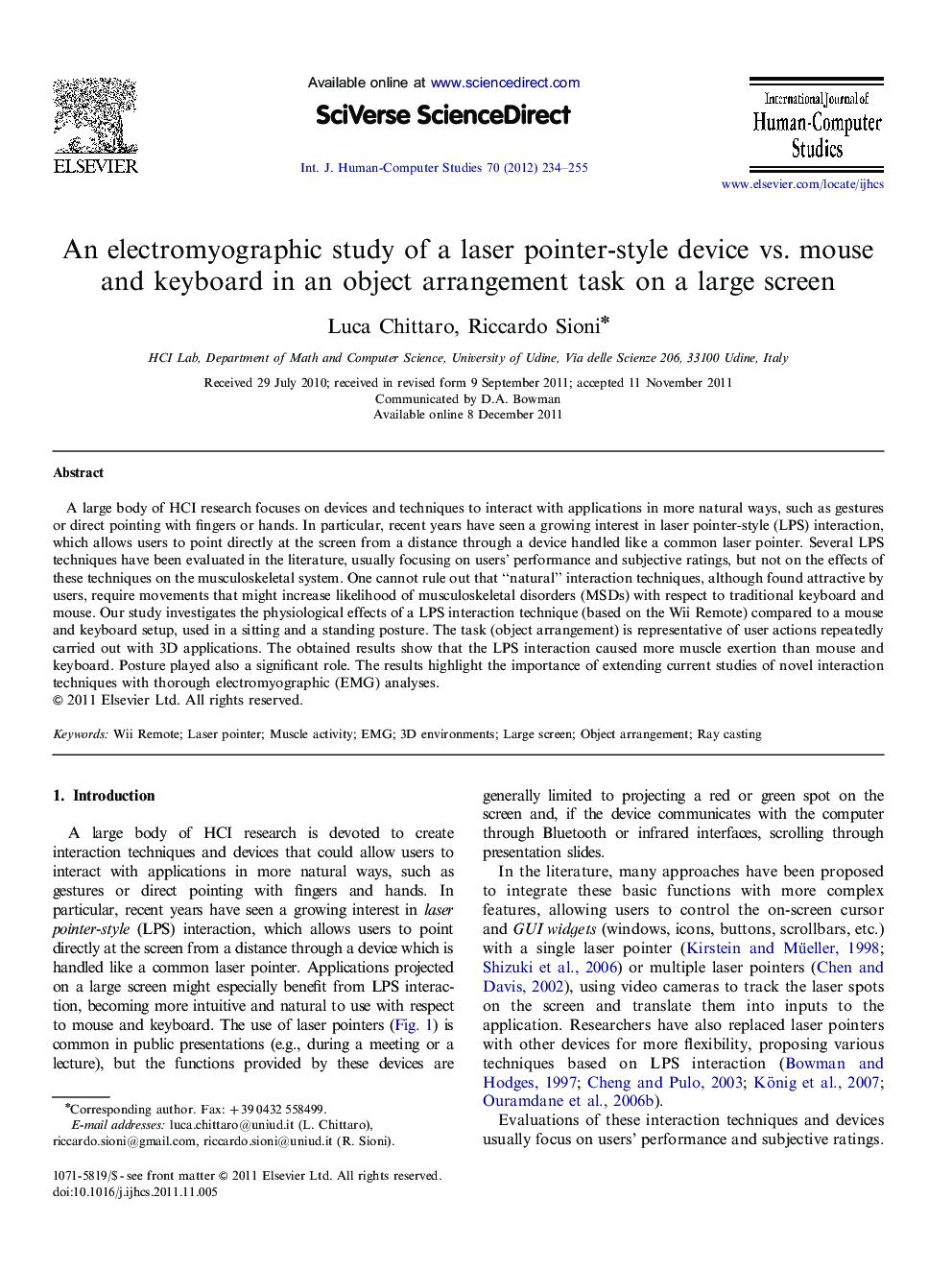| Article ID | Journal | Published Year | Pages | File Type |
|---|---|---|---|---|
| 400914 | International Journal of Human-Computer Studies | 2012 | 22 Pages |
A large body of HCI research focuses on devices and techniques to interact with applications in more natural ways, such as gestures or direct pointing with fingers or hands. In particular, recent years have seen a growing interest in laser pointer-style (LPS) interaction, which allows users to point directly at the screen from a distance through a device handled like a common laser pointer. Several LPS techniques have been evaluated in the literature, usually focusing on users' performance and subjective ratings, but not on the effects of these techniques on the musculoskeletal system. One cannot rule out that “natural” interaction techniques, although found attractive by users, require movements that might increase likelihood of musculoskeletal disorders (MSDs) with respect to traditional keyboard and mouse. Our study investigates the physiological effects of a LPS interaction technique (based on the Wii Remote) compared to a mouse and keyboard setup, used in a sitting and a standing posture. The task (object arrangement) is representative of user actions repeatedly carried out with 3D applications. The obtained results show that the LPS interaction caused more muscle exertion than mouse and keyboard. Posture played also a significant role. The results highlight the importance of extending current studies of novel interaction techniques with thorough electromyographic (EMG) analyses.
► Laser pointer-style interaction is considered more natural than mouse and keyboard. ► We compare the two interaction techniques on an object arrangement task. ► We focus on physiological effects of interaction technique and posture. ► We observed significant effects of technique and posture on muscle activity. ► We highlight the importance of carrying out thorough EMG analyses.
